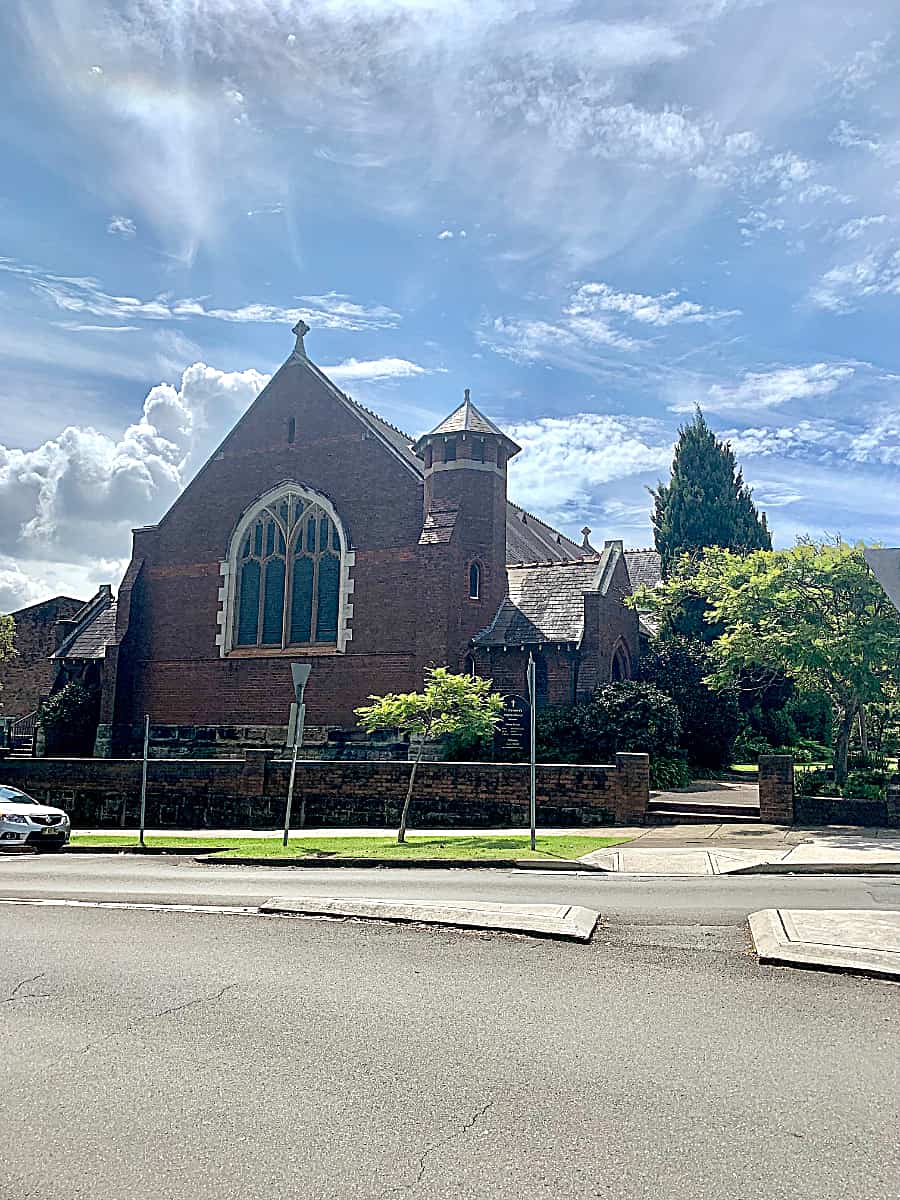
St Clement’s Anglican Church, Mosman – exterior from west
(photograph by Pastor de Lasala [18 March 2022])
Historical and Technical Documentation by John Maidment
© OHTA, March 2022

St Clement’s Anglican Church, Mosman – exterior from west
(photograph by Pastor de Lasala [18 March 2022])
Historical and Technical Documentation by John Maidment
© OHTA, March 2022
The foundation stone of St Clement’s Church was laid on 13 December 1902, and the building dedicated on 16 December 1903. Of cruciform shape, the church is constructed in brown bricks in the Gothic style and windows with perpendicular tracery. The architects were Nixon & Adam and the building cost about £5200. The seating was constructed from kauri timber and the east window, representing the supper at Emmaus, was made by Frederick Ashwin.1
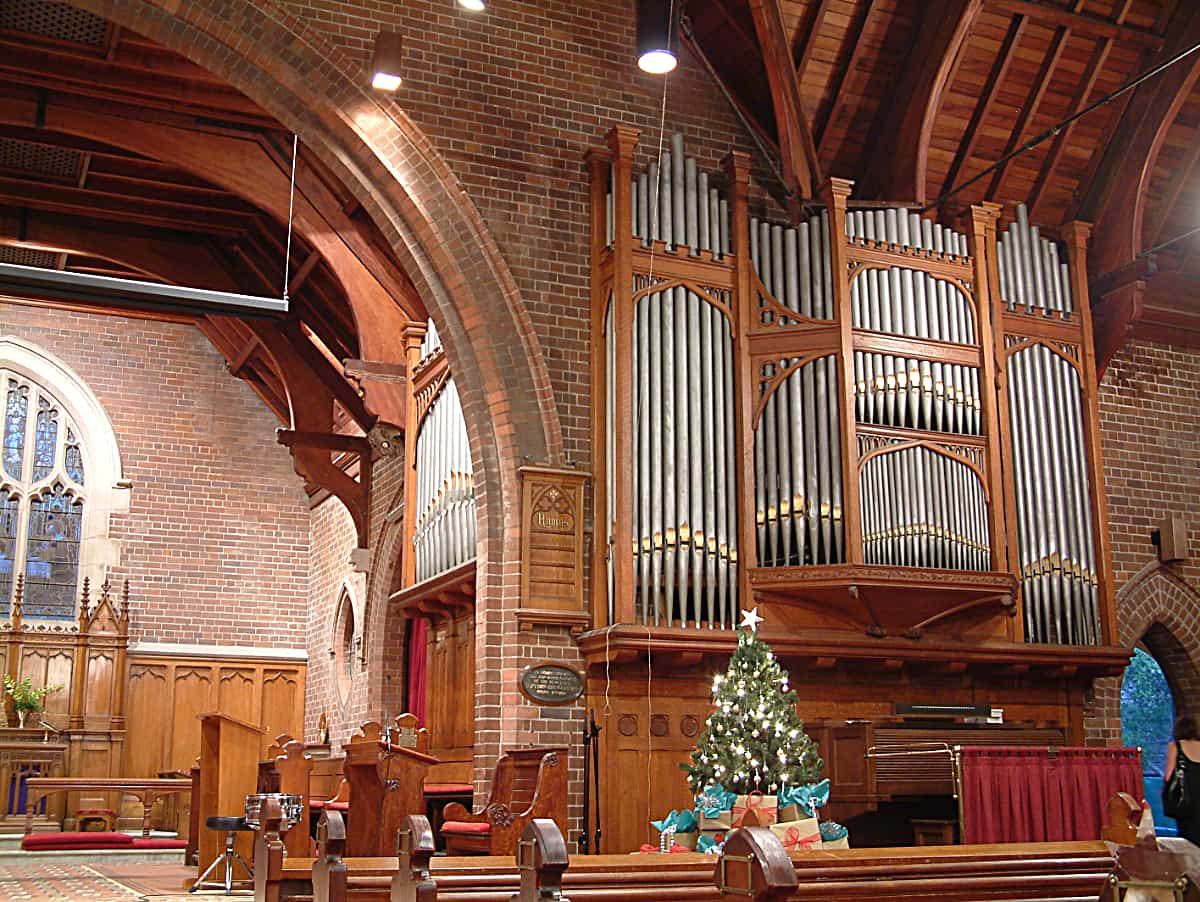
St Clement’s Anglican Church, Mosman – organ
(photograph by Pastor de Lasala [Dec 2012])
The previous organ, built by Charles Richardson, was moved to the Methodist Church, Lismore, and replaced in 1911 by the new organ built in Melbourne by Frederick Taylor.
The new organ at St. Clement’s, Mosman received its recital baptism at the hands of Mr. Arthur Massey on Tuesday night, is the latest example of Australian organ construction. On this account alone it is deserving of the earnest attention of local organists and organ committees. The instrument comes from the workshops of Mr. Fred Taylor, of Hawthorn, Melbourne. Church organists, of course, are wont to hold their new box of whistles in appreciative regard. But Mr. Arthur Massey is a gentleman with wide experience in organs, all appertaining to organ building, and his favorable opinion must necessarily count for much. Mr. Massey speaks most enthusiastically of his new instrument, and no doubt endorsement of his views in regard to its qualities, and some of its novel features, will be forthcoming from the leading organists.
It is claimed that this organ is quite unique in some respects. It is stated that Mr. Taylor has achieved much success in securing perfect repetition, promptness of attack, and stop control. It is specially pointed out that his patented ad libitum system of stop-control is of great value. Some of the accepted ideas of organ tone color are departed from, whilst the introduction of new stop combinations cause the instrument to be unequalled in modern tonal ideas. Some of the new stops incorporated in this scheme are Viole Sourdine, Tibia Minor, and Tuba Minor on the great organ; Contra Viola, Viole d'Orchestre, Violin Diapason, and Geigen Principal on the swell organ. These, and many other beautiful stops were manufactured and voiced by the well-known London specialists, Alfred Palmer and Sons. The blowing plant comprises a "Discus" Blower, connected to a 2 horsepower gas engine. The "Discus" (Watkins, we presume) is now used largely in England. It is stated that the one Installed at St Clement’s is the first imported to Australia. Watkins's patent may be described as an air-turbine. It is constructed of metal, and is absolutely silent.
The specification of the new organ, which is a three-manual instrument, was evidently drawn up with much care. It was prepared by Mr. J. Earnshaw, and submitted to Dr. J. Bradley. F.R.C.O. and other eminent organists, all of whom expressed favourable opinions as to the choice stops, &c. At first sight it might seem as if organ committees claim that "In designing this instrument every care has been taken to provide a solid basis of foundation tone ... " has not been borne out in the specification. But modern organ voices are so many, and the wealth of organ invention so great in recent years, that it is unsafe to cling too tenaciously to old ideas, and pronounce judgment without hearing the organ under various conditions.
Here is the specification:—
GREAT ORGAN.
Open Diapason, 8ft. metal.
Tibia Minor, 8ft. wood and metal.
Dolce, 8ft. metal.
Viole Sourdine. 8ft. metal.
Octave, 4ft. metal.
Harmonic Flute, 4ft. metal.
Harmonic Gemshorn, 2ft. metal.
Tuba Minor, 8ft. metal.SWELL ORGAN.
Contra Viola, 16ft. wood and metal.
Violin Diapason, 8ft. metal.
Hohl Flute, 8ft. wood.
Viole d'Orchestre, 8ft. metal.
Geigen Principal, 4ft. metal.
Rohr Flute, 4ft. metal.
Vox Humana, 8ft. metal.
Cornopean, 8ft. metal.CHOIR ORGAN.
Gemshorn, 8ft. metal
Clarabella, 8ft. wood.
Suabe Flute, 4ft. metal.
Clarinet, 8ft. metal.
Orchestral Oboe, 8ft. metal.PEDAL ORGAN.
Open Bass, 16ft. wood.
Sub Bass, 16ft. wood.
Dulciana, 16ft. metal.
Violoncello, 8ft metal.Manual compass, C.C. to C, 61 notes.
Pedal compass, C.C.C. to G, 32 notes.COUPLERS.
Swell to Pedal.
Great to Pedal.
Choir to Pedal.
Swell to Great.
Swell to Choir.
Choir to Great Sub-Octave.
Swell to Great Sub-Octave.
Swell Octave.
Tremulant to Swell.
Tremulant to Choir.ACCESSORIES.
4 Pneumatic Pistons, Great Organ.
4 Pneumatic Pistons, Swell Organ.
1 Composition Pedal, Swell to Pedal, Reversible.
1 Composition Pedal, Great to Pedal, Reversible.
1 Composition Pedal, Full Pedal.
1 Composition Pedal, Soft Pedal.
Balanced Pedal on Swell.
Balanced Pedal on Choir.
Tubular pneumatic action throughout; pedal Wesley-Willis scale.2
This was among the earliest symphonic-style organs in Sydney and set a pattern that Taylor followed elsewhere, such as at Ashfield Methodist Church (organ now at Yass), Armadale Methodist Church and St Matthew’s Church, Manly. The specification shows a fascinating mélange of narrow-scale strings, outward and inward tapering softer ranks, and colourful flutes. It was possibly the first organ in Australia to have 32-note pedal compass. The main case facing across the transept is spectacular and appears to contain the Pedal Dulciana 16ft. This and the chancel case timbers are Kauri.
Taylor built or rebuilt a number of three-manual organs:
St Matthew’s Church, Hamilton, SA – now at St Oswald’s Church, Parkside, SA
Residence of F.H. Wilson, St Kilda, Vic – now at St John’s Church, Colac, Vic
St Clement’s Church, Mosman, NSW
Presbyterian Church, Hawthorn, Vic
Our Lady of Mt Carmel Church, Middle Park, Vic
St Matthew’s Church, Manly, NSW
St George’s Church, East St Kilda, Vic
The Mosman instrument was rebuilt by S.T. Noad & Son in 1964, when the action was electrified and a new console installed. Arthur Jones made tonal modifications around 1970. The instrument was replaced by an electronic organ in 1981. The contents were finally removed in 1995 but the two cases remain in the church. The parts have been reused elsewhere. This is a very tragic end to a remarkable instrument.3
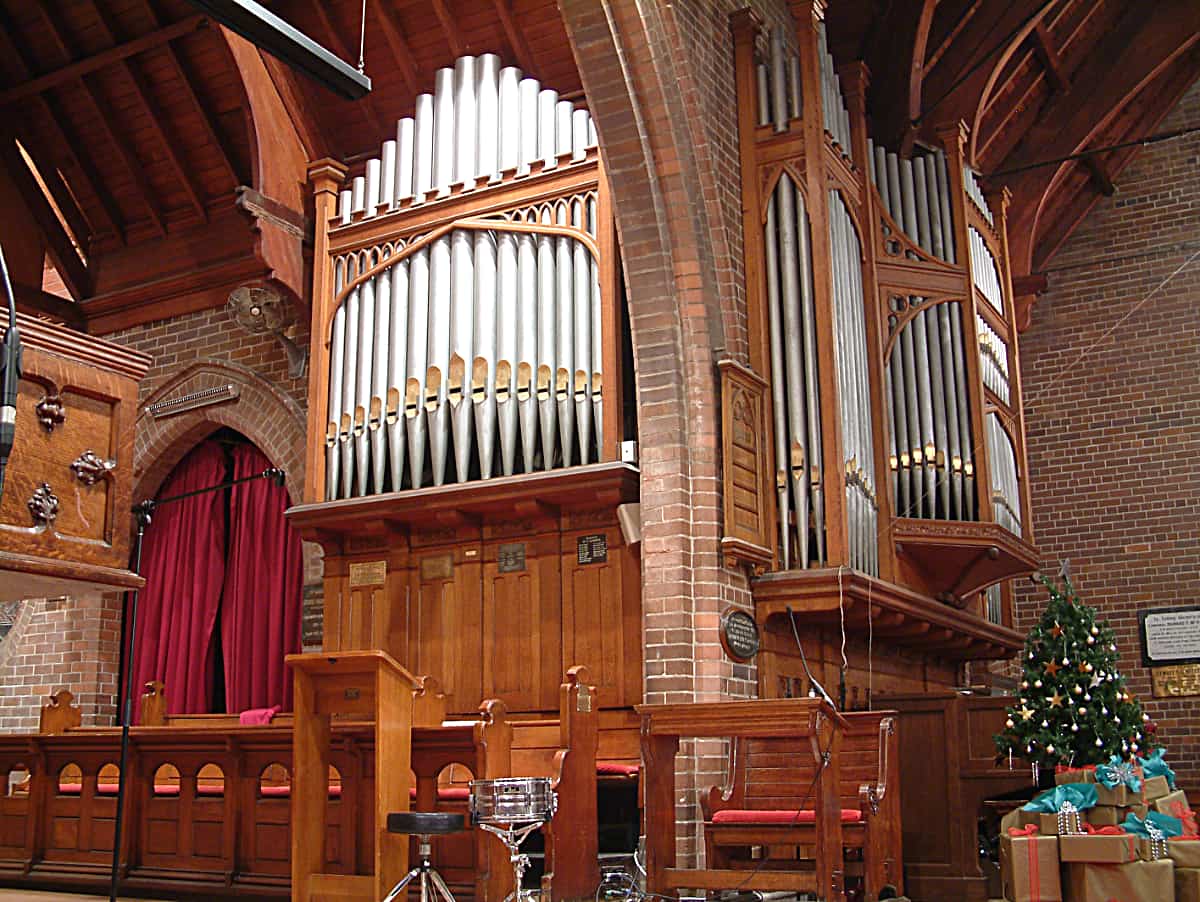
St Clement’s Anglican Church, Mosman – chancel organ case
(photograph by Pastor de Lasala [Dec 2012])
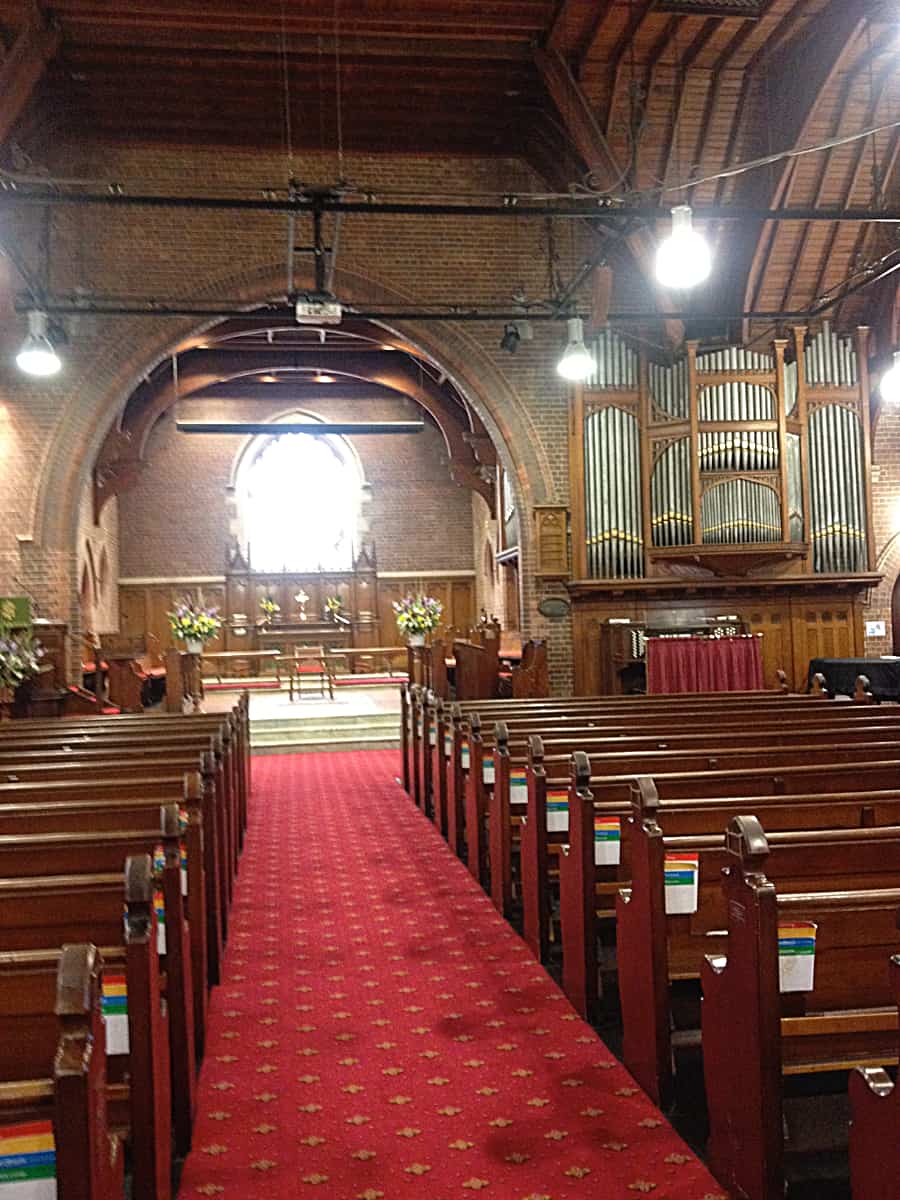
St Clement’s Anglican Church, Mosman – view of organ from nave
(photograph by Pastor de Lasala [Dec 2012])
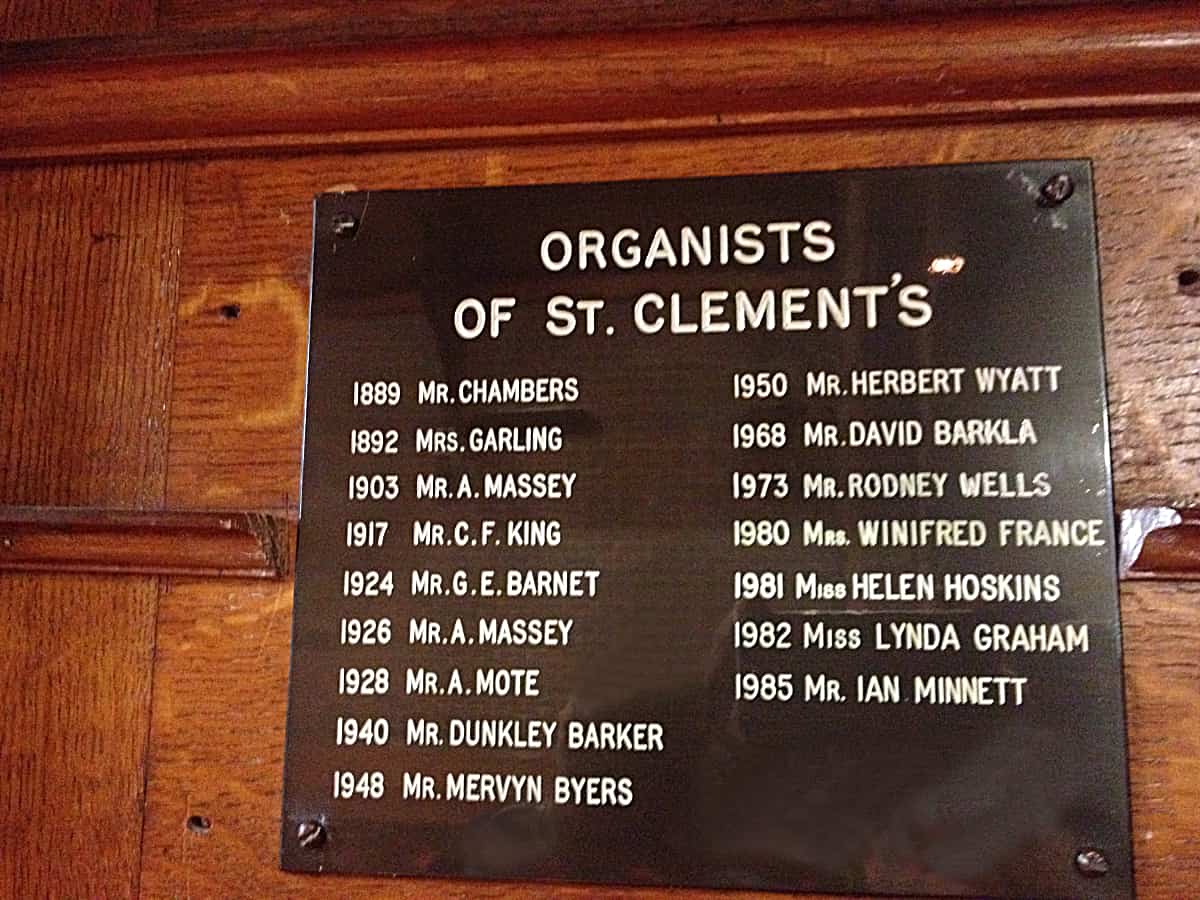
St Clement’s Anglican Church, Mosman – plaque listing organists
(photograph by Pastor de Lasala [Dec 2012])
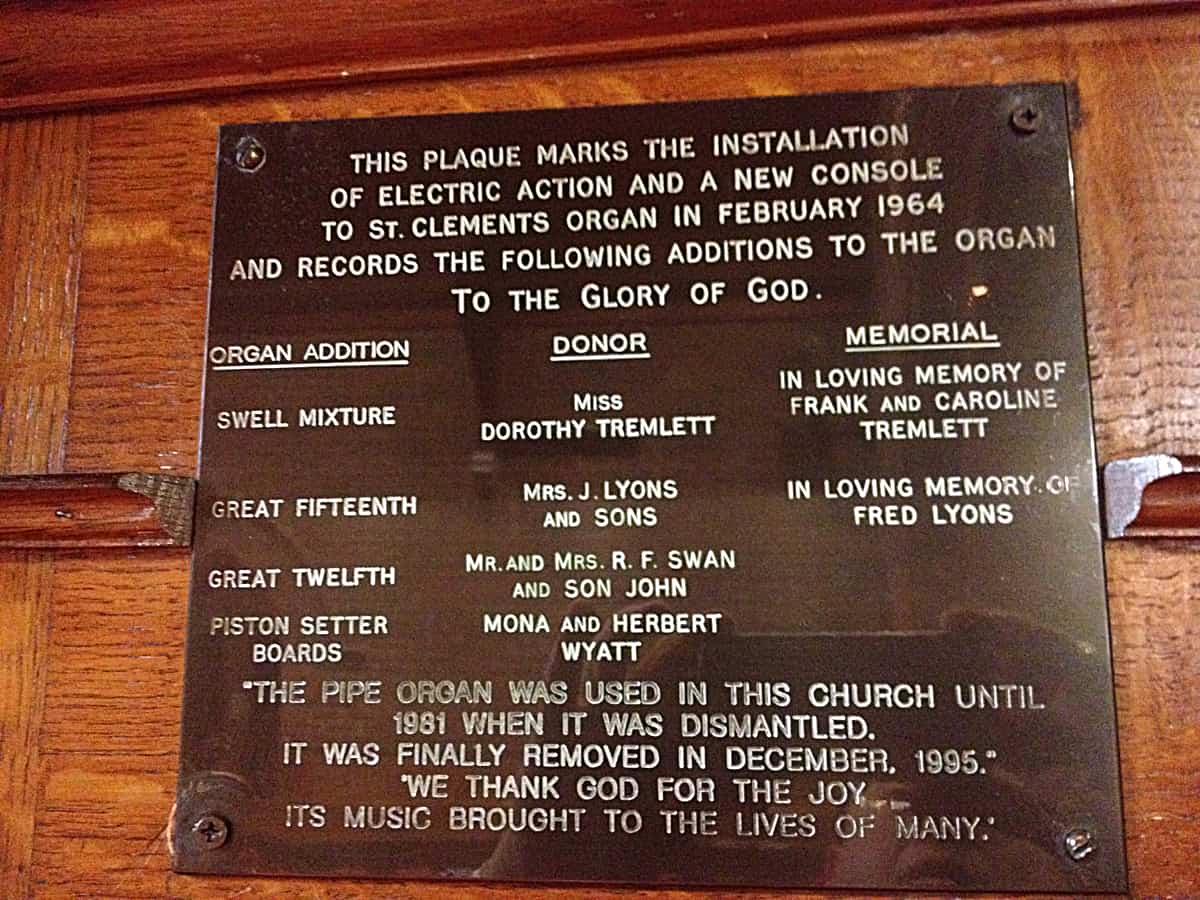
St Clement’s Anglican Church, Mosman – plaque giving subsequent history of organ
(photograph by Pastor de Lasala [Dec 2012])
1 Sydney Mail and New South Wales Advertiser, 16 December 1903, p.1580
2 The Sun, 4 March 1911, p.6
3 Author’s notes and plaque in church